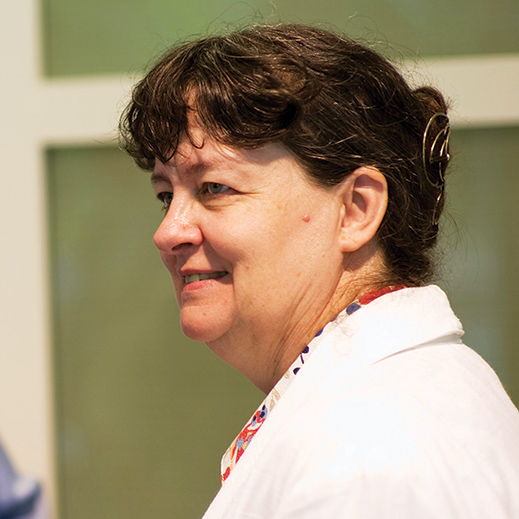Every time you hit a pothole in a road, you might think, “When was the last time anyone paved this?” Soon your chances of finding out will improve, thanks to Barbara Ostrom. As an on-site database engineer for the Turner-Fairbank Highway Research Center in McLean, Virginia, Ostrom works on data collection projects for the Federal Highway Administration (FHWA), including a long-term plan to make pavement performance data more accessible to the public.

“We expect that by early 2014, we will go live with an application called InfoPave that will allow users to go in and not only download data, but look at the changes in pavement sections and in traffic,” she explains.
Ostrom’s database includes information about more than 600 of the approximately 2,500 sections of road in the United States and Canada. The FHWA uses this data to make complex decisions about future infrastructure changes.
“We can’t build new roads in a lot of places. It just physically isn’t possible,” she admits. “Yet we’ve still got people who want to get there by themselves on time … We’re always going to need roads. People have got to build them and maintain them and get as many people using them as possible.”
Ostrom began delving into transportation data analysis in 1982 while working for the Maryland State Highway Administration. MIT gave her an Eisenhower Graduate Research Fellowship in 1994 to support her study of traffic data, specifically on truck traffic. Now, at Turner-Fairbank, she has continued her truck research by developing protocols for weigh-in-motion technology, which weighs trucks (to determine tax rates) as they travel at highway speeds.
Ostrom chose MIT because of her self-described military-brat heritage. “There were only two schools in the country that let women in and had naval architecture and naval ROTC, and I preferred going to MIT,” she says. However, she eventually joined the army ROTC because of restrictions on women serving on naval ships. Today she cites the ROTC program as a key source of mentors, memories, and long-lasting friendships. After earning her degrees, in both civil and environmental engineering, she served in the U.S. Army from 1978 to 1982, eventually commanding the headquarters company of the Third Basic Training brigade at Fort Leonard Wood in Missouri.
Now Ostrom volunteers for her local Girl Scouts council in Vienna, Virginia, teaching adult leaders and mentors basic leadership and introductory camping skills. She also maintains strong ties to MIT and is a generous financial supporter. This past June, the Koch Institute named a new computing center in her honor. The Barbara K. Ostrom (1978) Bioinformatics and Computing Facility allows researchers to analyze gene sequencing and other scientific data.
Keep Reading
Most Popular
Large language models can do jaw-dropping things. But nobody knows exactly why.
And that's a problem. Figuring it out is one of the biggest scientific puzzles of our time and a crucial step towards controlling more powerful future models.
How scientists traced a mysterious covid case back to six toilets
When wastewater surveillance turns into a hunt for a single infected individual, the ethics get tricky.
The problem with plug-in hybrids? Their drivers.
Plug-in hybrids are often sold as a transition to EVs, but new data from Europe shows we’re still underestimating the emissions they produce.
Google DeepMind’s new generative model makes Super Mario–like games from scratch
Genie learns how to control games by watching hours and hours of video. It could help train next-gen robots too.
Stay connected
Get the latest updates from
MIT Technology Review
Discover special offers, top stories, upcoming events, and more.